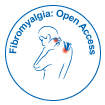Evaluating Vigilance in Fibromyalgia through Objective Measures
Received Date: Oct 02, 2015 / Accepted Date: Dec 07, 2015 / Published Date: Dec 10, 2015
Abstract
Objective
Fibromyalgia syndrome (FS) involves chronic pain accompanied by alteration of cognitive functions, mainly memory and attention. Despite vigilance is a pre-requisite for appropriate performance in most cognitive tasks, it has not been assessed directly in fibromyalgia. The current research aimed to study vigilance in this illness and to explore the potential role of other common symptoms of the syndrome such as pain, sleep quality, anxiety and depression in vigilance performance.
Methods
The Psychomotor Vigilance Task (PVT) was used to assess the vigilance level in a group of fibromyalgia female patients (n=28) compared to a group of healthy women (n=18) matched in age and education level.
Results
The fibromyalgia group reported higher levels of anxiety, depression, negative mood and pain, poorer sleep quality, and lower levels of alertness than the control group. In the PVT, the fibromyalgia group showed slower responses in the PVT as compared to the control group. Fibromyalgia patients further showed high individual differences in vigilance, with a subgroup of them having similar performance in the PVT than the control group. Performance in the PVT showed no relationship with subjective measures.
Conclusion
These findings provided direct support to a vigilance deficit in fibromyalgia as a group. However, there are individual differences suggesting that not all the patients with fibromyalgia necessarily experience vigilance detriment. Since the vigilance state can determine basic functions such as memory and attention, these individual differences should be considered when assessing other cognitive domains in fibromyalgia.
Keywords: Alertness; Sustained attention; Vigilance; Anxiety; Sleep quality; Pain; PVT
Citation: Morilla BR, Lupianez J, Miro E, Martinez MP, Sanchez AI, et al. (2015) Evaluating Vigilance in Fibromyalgia through Objective Measures. Fibrom open 1:102.
Copyright: ©2015 Morilla BR. This is an open-access article distributed under the terms of the Creative Commons Attribution License, which permits unrestricted use, distribution, and reproduction in any medium, provided the original author and source are credited.
Select your language of interest to view the total content in your interested language
Share This Article
Open Access Journals
Article Usage
- Total views: 10865
- [From(publication date): 12-2016 - Dec 08, 2025]
- Breakdown by view type
- HTML page views: 9924
- PDF downloads: 941
